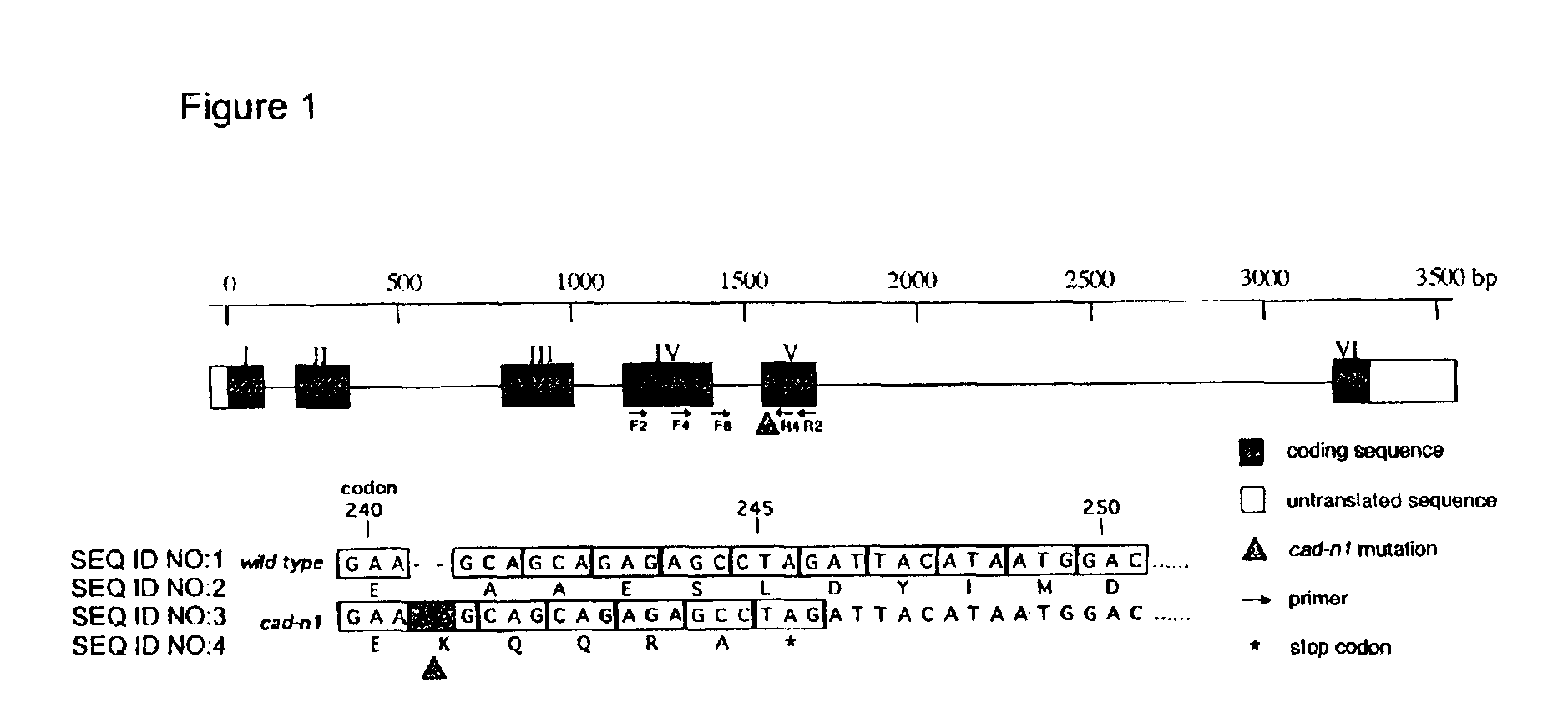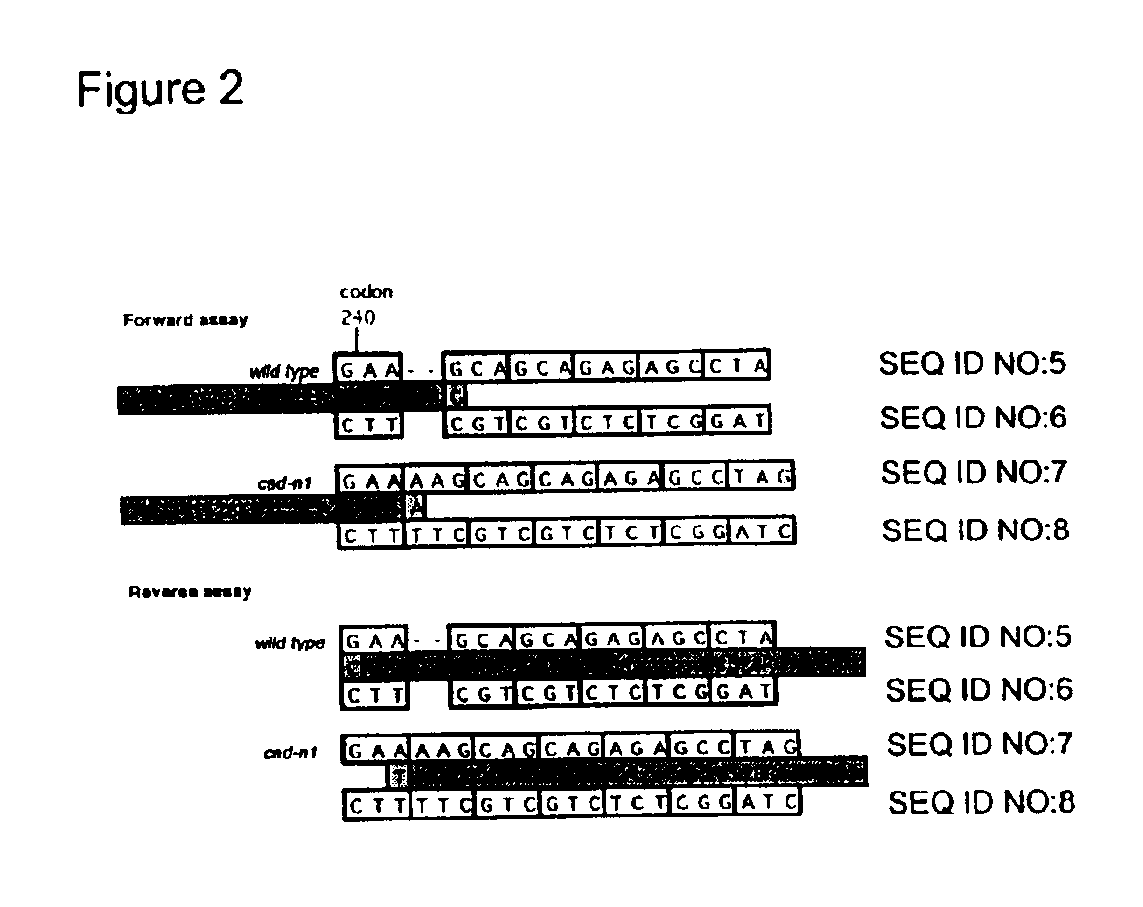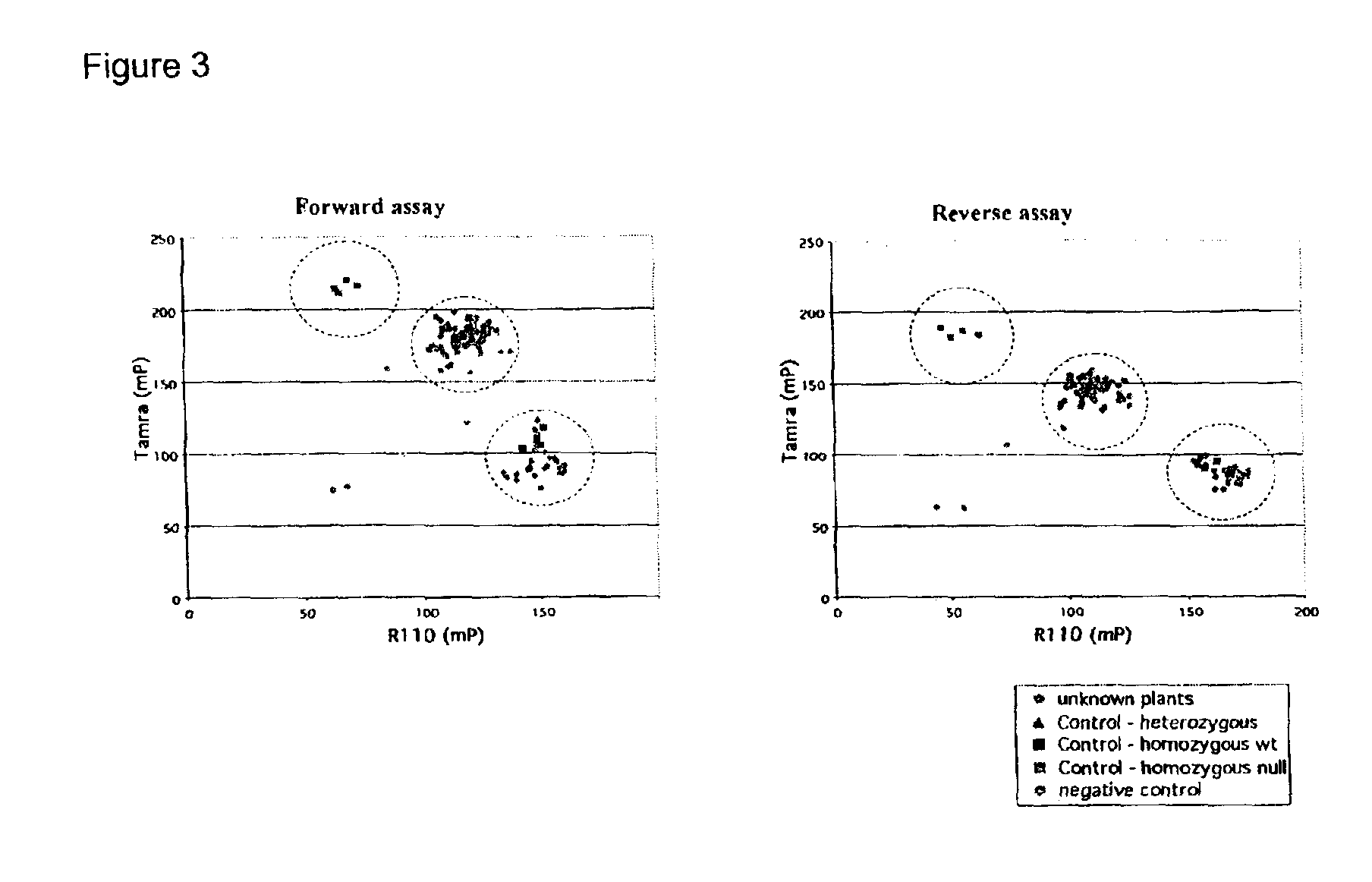Compositions and methods for detecting a sequence mutation in the cinnamyl alcohol dehydrogenase gene associated with altered lignification in loblolly pine
- Summary
- Abstract
- Description
- Claims
- Application Information
AI Technical Summary
Benefits of technology
Problems solved by technology
Method used
Image
Examples
example
Materials and Methods
Plant Material
[0045]Four plant material sources were used for the identification and testing for the presence of the cad-n1 allele: (1) A panel of 32 loblolly pine megagametophytes (Weyerhaeuser Company Federal Way, Wash., USA), including one megagametophyte from clone 7-56, was used for SNP discovery within the cad gene, (2) 167 clones (CellFor Inc., Vancouver, BC, Canada) resulting from nine crosses, using clone 7-56 or 7-56 offspring as parents, was used for testing the FP-TDI assay, (3) A selection of 242 first-generation clones (North Carolina State University Cooperative Tree Improvement Program and Weyerhaeuser Company Federal Way, Wash., USA) from the natural range of loblolly pine was used for estimating the frequency of the cad-n1 allele, and (4) 96 progeny from the VERIFICATION population (Brown et al., submitted) of the QTL pedigree (Groover et al., 1994) was used for investigating the cad-ps1 locus.
[0046]Seeds from loblolly pine clone 7-56 were germ...
PUM
 Login to View More
Login to View More Abstract
Description
Claims
Application Information
 Login to View More
Login to View More - R&D
- Intellectual Property
- Life Sciences
- Materials
- Tech Scout
- Unparalleled Data Quality
- Higher Quality Content
- 60% Fewer Hallucinations
Browse by: Latest US Patents, China's latest patents, Technical Efficacy Thesaurus, Application Domain, Technology Topic, Popular Technical Reports.
© 2025 PatSnap. All rights reserved.Legal|Privacy policy|Modern Slavery Act Transparency Statement|Sitemap|About US| Contact US: help@patsnap.com



